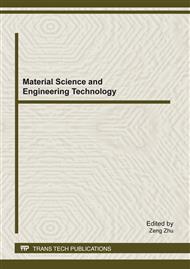p.129
p.135
p.141
p.147
p.154
p.160
p.164
p.169
p.173
The Change of Residual Stress with Two-Wire Spacing of Twin-Wire Submerged Arc Welding
Abstract:
Finite element software MSC.MARC was used to analyze the residual stress of high-strength low-alloy steel suffered twin-wire SAW. The numerical simulation of the residual stress field with different twin-wire spacing was conducted. The residual stress test results under twin-wire SAW at twin-wire of 50 mm welding were compared to the simulation results, which verified the numerical simulation. The results showed that in the single-channel and twin-wire welding, the largest welding residual stress of the joints is located near the weld toe. At certain wire distances (20-100 mm) in the twin-wire welding process, increasing distance only minimally reduces welding residual stress. Thus, the effects of residual stress on two-wire spacing have been neglected in studies on the twin-wire welding process,More studies should focus on the impact of the performance and forming of the weld joint.
Info:
Periodical:
Pages:
154-159
Citation:
Online since:
February 2012
Authors:
Keywords:
Price:
Сopyright:
© 2012 Trans Tech Publications Ltd. All Rights Reserved
Share:
Citation:


